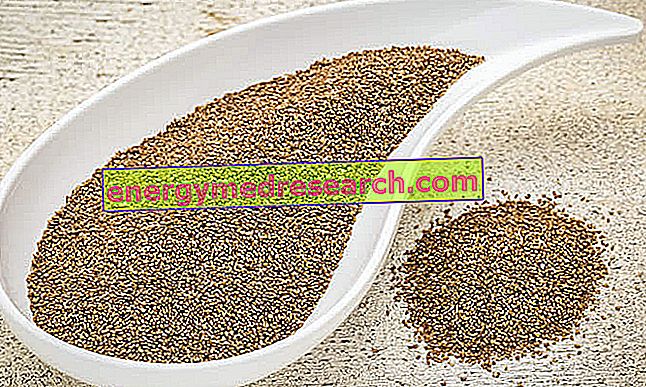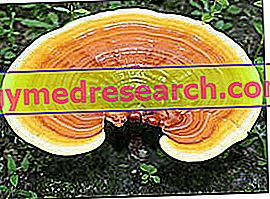Generality
The teff is a plant belonging to the Poaceae Family (Gramineae or Cereals), Genus Eragrostis and Specie tef ; the binomial nomenclature of the teff is Eragrostis tef .
This annual herbaceous plant is native to the African continent, more precisely from Ethiopia and Eritrea. Like other cereals, the seeds are also consumed, ie the only portion edible for humans.
By popular etymology, the name teff comes from the root ethio-semita "tff", which means "lost". The word refers to the ease with which the small seeds of the cereal can be dispersed.

Nutritional Properties
The teff is a product that is part of the III fundamental group of foods but, NOT containing gluten, lends itself to the diet against celiac disease.
It has a nutritional profile that is noteworthy as, in addition to complex carbohydrates, it provides a fair amount of proteins rich in amino acid lysine. It should however be kept in mind that the pool of amino acids contained in the teff, compared to that essential for humans, does not respect the same proportions. Simply put, although peptides contain all 8 essential amino acids, they have a medium and not high biological value.
| Nutritional composition of Teff | ||||||||||||||||||||||||||||||||||||||||||||||||||||||||||||||||||||||||||||||||||||||||||||||||||
 | ||||||||||||||||||||||||||||||||||||||||||||||||||||||||||||||||||||||||||||||||||||||||||||||||||
Nutritional values (per 100 g of edible portion)
| ||||||||||||||||||||||||||||||||||||||||||||||||||||||||||||||||||||||||||||||||||||||||||||||||||
The level of fat in teff is negligible and, among these, cholesterol is not included. Being rich in fiber, teff lends itself to diet against constipation and to the low glycemic index diet; the latter is useful in case of: overweight, type 2 diabetes mellitus and hypertriglyceridemia. However, having an important glycemic load, it must still be used in controlled quantities.
Among the mineral salts, calcium and iron levels do not disappoint, although their bioavailability is quite limited. There are also: phosphorus, magnesium, aluminum, copper, zinc, boron and barium (not all present in the table below).
As for vitamins, teff is rich in thiamine (vit B1) and niacin (vit PP).
The teff does not contain lactose and lends itself to the diet for celiac disease; has no contraindications for vegetarian and vegan regimens.
It must be taken in a similar way to other cereals and derivatives, therefore with moderate portions in case of overweight, hyperglycemia and hypertriglyceridemia.
The average portion of raw teff to be used as a first course is about 80-90g (295-330kcal).
Features and Uses
The primary commercial value of teff in human nutrition is gluten-free foods. As for cooking, the seeds can be treated in a similar way to those of millet and quinoa; however, being smaller, they require a lower temperature and time.
The teff is a cereal adapted to both arid and marshy environments. Optimal production occurs at altitudes of around 1800-2100m, with rainfall of 450-550mm and temperatures of 10-27 ° C. The teff is very sensitive to sunlight and blooms optimally with an exposure of 12 hours.
The teff is a very important cereal for the Ethiopian and Eritrean population (about ¼ of the total cereal production), where it is used to package the "injera" or "keyta"; it is also the main ingredient in the preparation of "Tella", a traditional beer from Ethiopia, and was used for the industrial production of gluten-free beer. In India and Australia, the teff is widespread but less relevant; in Idaho and Kansas (USA) it is expanding due to its advantages in forage use.
Thanks to the smallness of the seeds (diameter less than 1mm), a handful of teff is sufficient to cultivate an area that is even very large. This property makes teff particularly suited to the semi-nomadic lifestyle.
In 1996, the US "National Research Council" defined the teff as "potentially useful food for improving nutrition and food security, as well as promoting rural development and sustaining the territory".



